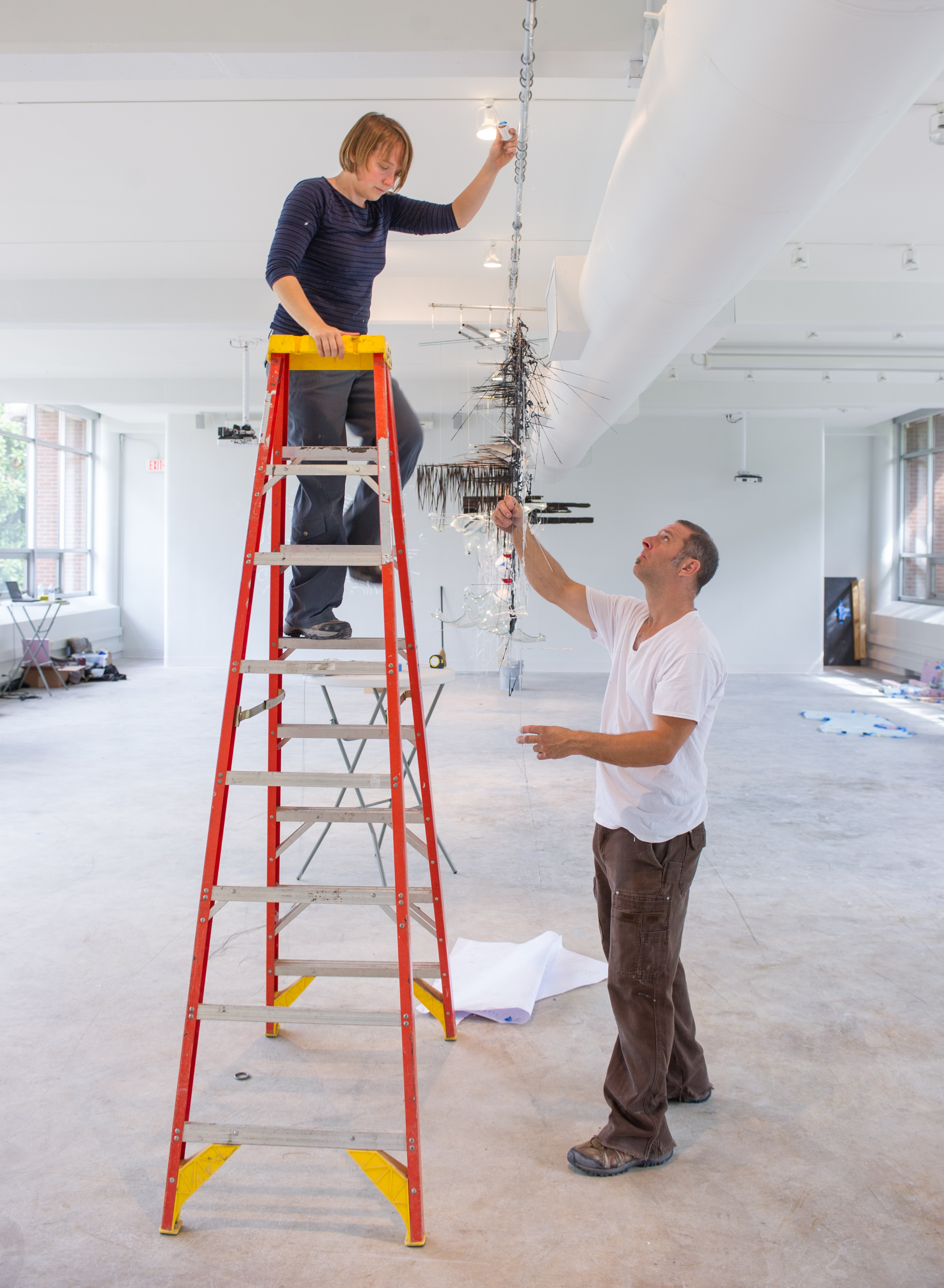After Curfew, the Works of Artist Catie Newell

What defines art? Is it the representation of an abstract idea or just one that dwells within?
Alumna Catie Newell tackles this question in her exhibit, After Curfew, which opened at the Stubbins Gallery in the College of Architecture last week.
“Catie's practice is remarkable, not just for the notice and awards it has received, or even for its beauty and strength, but also because it describes and explores a particularly engaging and relevant way of working, one that we were keen to put into the view of our students and others in the academic and professional community," said Mark Cottle, associate professor in the School of Architecture and chair of the Stubbins Gallery Committee.
Newell graduated from the College of Architecture after changing majors from aerospace engineering in 2003.
“Approaching architecture with an interest in design, travel, and implications of space opened up my thinking for my pursuit of architecture moving forward,” she said.
She went on to pursue a Master of Architecture degree at Rice University, where she began her installation work. Her idea of intertwining architecture and art into a form where they are representative of the same concept began to emerge. This led her to work at the firm Office dA in Boston, where she developed as an architect and began to cultivate her passions in a more spatially defining way.
How does it feel to have your work represented at your alma mater?
It is a treasure to return and reflect.
What was your source of inspiration for this particular exhibit, “After Curfew”?
After Curfew is a survey of all of the material research and installations that I have done over the last five years. Coming back from a year residency at the American Academy in Rome, the timing felt perfect to take stock in all the work that has been done in quite an intense set of years. It’s wonderful to present it in a way that is new for the work — in location and time.
Is this inspiration constantly present in some way in all of your works?
The inspirations for me that are constantly present are: the current circumstances affecting a particular setting — in particular urban issues. I’ve also developed a keen eye for illumination, and more importantly for darkness. Those effects are always present in my work. When it comes to developing the work, I work carefully with materials and effects to alter existing spaces. Pulling all of these factors my focus.
How do you know what materials will provide the best atmosphere or mood for the theme you are going for?
Oftentimes, there is a resonance with the space and its darkness or illumination. I use materials that are somehow tied to the space. They generally carry a commentary or reflection on the space; dialing in to the conditions that are present.
Would you ever consider doing a project on the same scale as “Salvaged Landscape” or “Weatherizing” (both installations with Alibi Studio) in Atlanta?
I would love to! It would be a joy and an honor. It is my dream to travel the world, doing these works as a way to celebrate and research the material cultures distinct to each place.
When coming up with an idea and trying to capture it physically, do you ever come across materialistic challenges? By this I mean, are there many physical constraints when it comes to preparing a gallery for a show that may be entirely focused on the visualization of something such as glass?
Challenges are everywhere! The trick for me is to not see them as a stumbling block or an error. I like to use things opportunistically. I like constraints. They help me make amazing design decisions and surprises, and in the end it has a better relationship to the host space.
What is your favorite part about the exhibits that you have been involved with and have personally put on?
The people that get involved. For After Curfew, my best friend and a collaborator I often work with, Joe Proper, came with me. For several of my Detroit projects, my father worked closely with me to help with the installations. And the glasswork is in collaboration with my dear friend and colleague, Wes McGee. There is nothing sweeter than good collaborations and making things with people that mean a lot to you.
After Curfew will be on display in the Stubbins Gallery from now through Nov. 7. The Stubbins Gallery is located in the Architecture East Building, at 245 Fourth Street NW, Atlanta, Ga., 30332. Stubbins Gallery is open weekdays from 8 a.m. to 4 p.m.